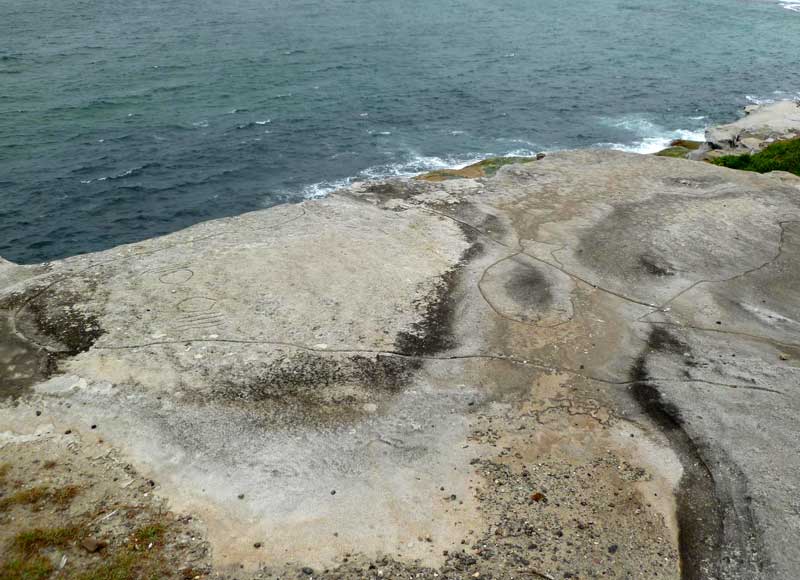
By David Handley AM with research assistance by Elizabeth Stanton.
The Aboriginal rock carving on the coastal walk between Mackenzie’s Beach and the South Bondi headland is a spectacular example of pre European contact Aboriginal art, however almost nothing is known about the carving or the people who carved it. So little is known about the Aborigines who traditionally inhabited the Bondi region that no one is certain whether the people were called the Eora, Cadigal or Birrabirragal, or whether they belonged to the Dharawal, Dharug or Kuring-gai language groups. There is even dispute over the English spelling of these names. This lack of contemporary knowledge is a direct result of the history of the British settlement of Sydney.
In May 1788, just four months after the British settlement in Sydney Harbour, Captain Arthur Phillip the first Governor of New South Wales wrote; “It is not possible to determine with any accuracy the number of natives, but I think that in Botany Bay, and the immediate coast they cannot be less than one thousand five hundred”. Within two years of the British settlement an outbreak of small pox amongst the Aborigines of Sydney Harbour decimated these people. This fact combined with an apparent indifference towards the carvings by the early British settlers, has resulted in only one remaining account of the Sydney carvings by an Aboriginal contemporary to their use before European contact. This account was given by Queen Gooseberry in the 1840s whose father told her of the North Head carvings, “black people made them long ago” for dances and ceremonies on special occasions. She is also reported to have said that at other times people stayed away from the “forbidden ground” as there was “too much debble walk about there”.
The first concerted effort to record and understand the carvings of Sydney Harbour and Broken Bay was conducted by W.D. Campbell from 1886-1893. His work was compiled into a report to the New South Wales Department of Mines and Agriculture in 1899 in which he notes, “The meaning of much of what is thus drawn and cut must inevitably be lost in oblivion with the rapid disappearance of the native races, no effort having been made, in the early days of settlement, to put on record the folk-lore of the blacks”. Indeed, Watkin Tench, an officer on the First Fleet whose account of the first years of the British settlement is otherwise the most detailed and objective history of these years, only records, “On many of the rocks are also to be found delineations of the figures of men and birds, very poorly cut”. Captain Arthur Phillip, wrote of the rock carvings in 1788 that they were done, “roughly indeed, but sufficiently well to ascertain very fully what was the object intended”. Of one particularly impressive carving Phillip did however write, “the figure of a man in the attitude usually assumed by them when they begin to dance, was executed in a still superior style”.